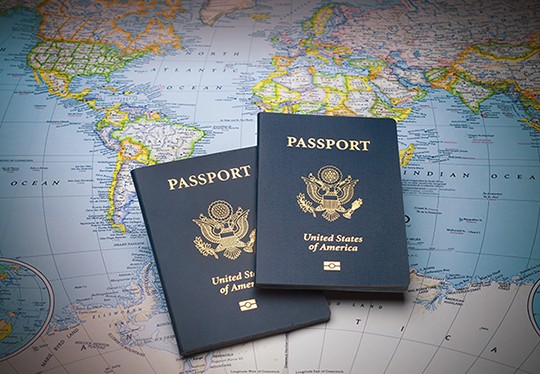Real ID is Going to be Minnesota’s First Problem of 2016

PASSPORT
January 15, 2016
Editor’s Note – This storywasupdated on January 16 2016 due to new information.
On December 21, the U.S. Department of Homeland Security (DHS) rejected a requested extension for Minnesota regarding implementation of Real ID, which is a new set of standards for government IDs like drivers’ licenses. The rejection may lead to Minnesotans being grounded from travel, as getting through airport security will not be possible for them unless they get a passport which are far more expensive.
Real ID was proposed after September 11, 2001, as a way to strengthen identification and prevent terrorists from being able to forge identification to access planes or government buildings prior to an attack. The standard was passed in 2005. The federal government repeatedly delayed implementation since 2007, however, because a majority of states largely ignored the standard. It seemed that DHS was going to implement Real ID in early 2016. However, on January 8 DHS updated the Real ID website with information that said the standard will not be implemented until at least January 2018 and possibly 2020.
Several other states have expiring extensions; they will also have to become compliant in order for their citizens to be able to fly when Real ID is fully enacted. In comparison thoughMinnesota has extra work to do because of a state law passed in 2009 that prohibited the Minnesota Department of Transportation from implementing Real ID.
While it seemed as ifMinnesota was only going to havea few months to repeal the 2009 law and implement the Real ID standards into Minnesota driver’s licenses they now have two years. This potentially allows the legislature to pass the topic tothe next legislature; which considering that it is an election year is possible. The announcement has also destroyed Governor Dayton’s hopes of getting a special session about Real ID as it was one of many issues he tried to use to bring the legislature back; despite the fact that he has the constitutional authority to call one.
The law preventing Minnesota from implementing Real ID, which passed with only one dissenting vote in both the House and the Senate, was largely proposed due to privacy concerns over the kind of information the new requirements demand. Some of the demanded information for new IDs includes location of birth and social security number. Other concerns focus on the DHS using the new ID requirements to pool everyone’s personal information into a national database, as the law requires states to share databases with each other. Then there are complaints about implementation, as many of the states which have met DHS standards have done it by offering another tier of license that is Real ID compliant. Minnesota also has another tier that is compliant, but the state as a whole is considered noncompliant, and the only offices that issue the compliant licenses are located in the Twin Cities metro. All the while, these other states have kept their original licenses, leading to confusion at airport security once this is finally implemented; many travelers will have no clue what the differences is.
With the above concerns noted, Minnesota cannot do much when Real ID gets fully implemented. If the legislature holds firm by not repealing the law, the only people who will be in trouble are Minnesotans without new and required identification, as they will not be able to fly. The rest of the nation may struggle to care about the pleas of Minnesotans, as residents in other states will still be able to fly. This means that Minnesota will most likely have to meet the requirements. That is unless something happens at the federal level and the 2005 Real ID act gets repealed which looks unlikely.
All information was accurate at time of writing.











